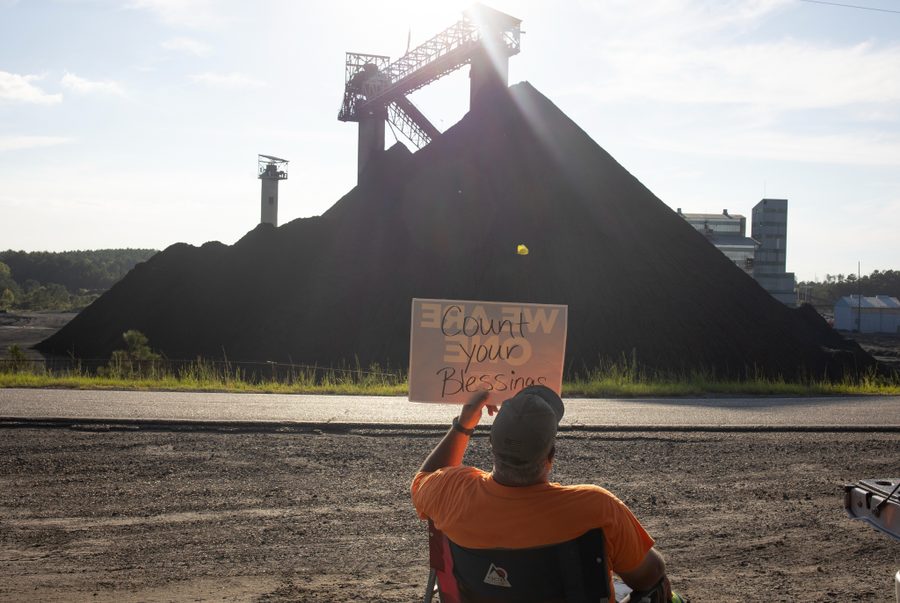10 Predictions for Labor in 2023
AI’s menace, institutional failures and a labor movement basking in energy not seen in decades.
Hamilton Nolan

It’s December, which means that it is, by law, the time when we look ahead at the coming year, and make shockingly insightful predictions about what lays ahead. A year ago, we made Ten Predictions for the Year Ahead in Labor that were, it turns out, very good. More on that below. With that track record of quality, you must feel compelled to read our predictions for 2023. Joys, disappointments, and killer robots, ahoy!
Standard disclaimer: Predictions are folly, and only fools make them. So:
- AI is a labor problem. Have you played with DALL-E 2, the artificial intelligence system that can spit out professional-quality illustrations based on any prompts you give it? How about ChatGPT, that can write essays, computer code, or anything else as you converse with it? They are amazing pieces of technology, and they are also a big, flashing sign of gargantuan labor problems ahead. The impact of AI on an entire universe of semi-creative jobs in entertainment, media, tech — and, I am sure, many other fields we haven’t even considered yet — could be comparable to NAFTA’s impact on America’s manufacturing jobs. Enormous swaths of work could be outsourced not to impoverished foreign nations, but to computer programs. This has been a theoretical threat for years, but now AI has reached the point at which it is about to get very, very real. Unions must get ahead of the problem now to try to protect workers. DO NOT WAIT! DO NOT WAIT! Trying to ban AI’s use is useless, but we would all be wise to seek out advice from unions like the Longshoremen, who have had some success shielding themselves from the ravages of automation. The main point is: We need strong strategies on AI now, because soon, it will be too late. But in even more immediate problems…
- The big first contract wall. We’ve all spent the past year celebrating the success of grassroots union drives at name brand companies: Amazon! Starbucks! Trader Joe’s! Huzzah! Now, those new unions face a task that is, in some respects, even harder: winning a first contract. At Amazon and Starbucks in particular, we have companies that are existentially opposed to unions, and that can and will drag out the contract process unto infinity, in hopes of drowning their fledgling unions in the bathtub. That would be a blow not just to workers at those companies, but to an entire country’s worth of grassroots enthusiasm about organizing, which has launched a wave of independent unions. We shouldn’t fool ourselves: Winning these contracts will require a lot of money, lawyers and political capital from the entire labor movement. Even in the best case scenario, it’s gonna take a while. And a related issue…
- The green shoots of new labor institutions. The rise of independent organizing drives everywhere was proof, above all, that organized labor as currently constituted was incapable of absorbing a true moment of opportunity. Rather than leading newly radicalized workers to the promised land, the creaky existing institutions in many cases sat on the sidelines. (The AFL-CIO’s vow to organize a pathetic one million workers in ten years was the splashiest demonstration of this failure of vision.) In 2023, look for at least the beginnings of some new institutions that aim to draw together and empower the many little explosions of organizing that we saw in 2022. In better news…
- Union democracy movements flourish. After many decades of calcified, undemocratic leadership, reform movements inside the UAW and the Teamsters have made significant gains in the past year. Similar movements are bubbling in other big unions as well. These breakthroughs are, at their core, driven by the same dynamic we mentioned above: Raw desire for worker organizing has reached such a high level that it is ready to fix the many broken, lazy aspects of the union world. And speaking of institutional opportunities…
- Higher ed asserts itself. My number one prediction last year was that higher ed would become a significant player in the union world. Amazing insight, yes! In 2022, the five largest union election filings in America (and the biggest strike of the year) were ALL grad student workers at major universities. Higher ed is creating more new union members than any other single industry in America — but they are divided among a number of different unions. It is nice to imagine a single dedicated union in higher ed, which would be large enough to be a significant player in the AFL-CIO, and which could pull that institution left. Ah, one can dream. Elsewhere in potential power…
- A reckoning for transport unions. Biden’s decision to prevent railroad workers from striking and impose a contract on them was by far the worst labor thing the ostensibly pro-labor president has done. But it, and this year’s White House freak out over touchy contract negotiations by longshoremen at West Coast ports, point to the inherent power in all the unions that have a position in the supply chain, and transportation in general. They may be hamstrung by the Railway Labor Act, in legal terms, but a rise in radicalism and coordination between railway, airline, and logistics unions could lead to a real, unassailable demonstration of what strike power looks like. Some of the union leaders in these industries have such vision, and some don’t. The weaker ones should watch their backs. Meanwhile, in Washington…
- Labor’s legislative gains grind to a halt. In two years of Democratic control of the White House and both branches of Congress, organized labor got a lot of money for its pensions, a very good but severely underfunded NLRB, some nice but not transformative regulatory changes, a crushed rail strike, and no PRO Act. That will be as good as it gets. Now that Republicans have taken the House, the chance for anything better, legislative speaking, is dead. It’s all a good reminder that we need to be pouring everything into organizing new workers, rather than chasing politicians. And to get a little more fine-grained…
- The Warrior Met Strike ends. More than a thousand UMWA miners in Alabama have been on strike now for more than 20 months. Another 12 seems impossible. Somehow the strike should settle in 2023, though the prospect of real gains for the strikers still seems uncertain at best. (The fact that the national Democratic Party didn’t use more of its muscle to lift up this strike was shameful, and foolish.) Donate to their strike fund! And if you need a more relaxing topic…
- Sports! The Major League Baseball Players Association joined the AFL-CIO this year, and promptly unionized minor leaguers for the first time, as well. That means the NFL and MLB are both in the union federation; if they can convince the NBA players to join, then the full trifecta of major American sports will be officially part of the larger labor movement. There is still great opportunity in college athlete organizing as well. In terms of PR for organized labor, these people are gold. Americans love athletes, to a stupid degree. We have to get busy putting all these players in front of cameras to talk about how good unions are, and sending them out to picket lines. Use what we have! We need the help! Finally, to close on a positive note…
- The energy in labor remains astronomical. I tend to focus on the labor movement’s problems. WHICH WE ALL SHOULD. We’re here to improve things, after all, not send ourselves endless thank you notes. But to take a step back and look at the big picture: We are living through the time of the most promise and excitement that the labor movement has seen since Ronald Reagan crushed the PATCO strike, broke unions’ spirits and launched four decades of growing inequality. Now! Now is the time! It’s been coming for years, but the pandemic accelerated the willingness of workers to take the leap towards organizing — to be willing to take a risk in exchange for the possibility of not having their entire working life be so dreary, underpaid and soul-sucking. I see no reason why this period of desire for unions should end next year. The real question is whether organized labor will be able to harness it, before it is crushed by the backlash from organized capital.
The new year is coming. Let’s get to work.
Hamilton Nolan is a labor writer for In These Times. He has spent the past decade writing about labor and politics for Gawker, Splinter, The Guardian, and elsewhere. More of his work is on Substack.








